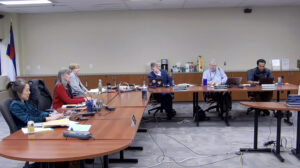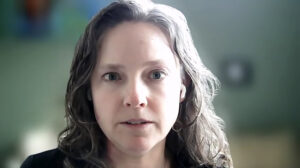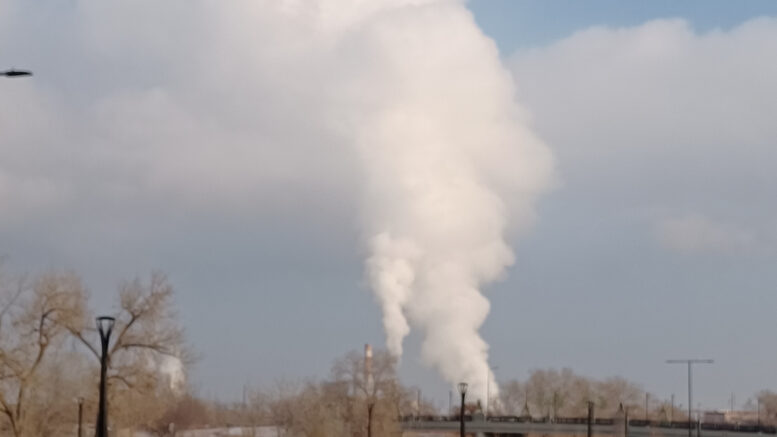The 105 Colorado companies responsible for producing the largest amount of greenhouse gases will begin paying to fund the state’s efforts to reduce such pollution following a state commission’s approval Friday of the first such emissions fees in state history.
These new fees represent another step in the state’s growing list of tools to try to combat the effect of emissions on climate change, following approval last year of new industrial-facility fees and building performance standards, among other rules. But Colorado Air Quality Control Commission members passed the latest regulation with some reluctance, noting that while the fees are needed, the way they are structured by the Legislature could end up costing companies more even as they reduce emissions.
Authorized as part of the 2021 Environmental Justice Act, the fees apply to any holder of a state air-quality permit that generates more than 25,000 metric tons of carbon dioxide equivalent per year at a single facility or at combined oil-and-gas operations. Fees, which will range between several thousand and several hundred thousand dollars per payor, are based on emission tonnage from each facility or company and then divided so that each payor’s bill is proportionate to their share of emissions subject to the rule.
According to the law, the fees must fund the Air Pollution Control Division’s program aimed at decreasing greenhouse-gas emissions as the state strives to meet increasingly tougher goals through 2050 — a cost calculated at $6.54 million annually. The law sets the threshold on who must pay fees, and legislators who have OK’d greenhouse-gas emissions program funding have said the fees must be in place by July 1 as they won’t continue to provide money from other sources to fund the 19 program employees.
Unease around the effect of enabling law

Members of the Colorado Air Quality Control Commission discuss emissions fees during a meeting on Thursday.
AQCC members agreed that the fees are necessary to fund emissions-reduction efforts — particularly as the state is not on track to reach 2025 goals and may struggle to hit 2030 marks as well, commissioner Elise Jones said. But both they and business leaders expressed concern about the way that HB 21-1266 requires the limited number of affected companies to foot the full bill for the program in a way that they may have to pay higher costs even as they cut their own emissions.
One of the issues surrounding the limited pool of payers is that some of the largest emissions producers in Colorado — coal-fired power plants — will transition out of service over the next seven years. Because the amount of money that the fee program raises cannot go down under the law, the large emitters that remain after those plants go offline will have to pay a greater portion of the tab as the pool of payers shrinks.
Josh Korth, APCD lead technical analyst for climate change, estimated each of the 10 remaining coal-fired units could be responsible for about 2% of the regulated emissions. While some of their facilities will remain open and convert to other fuels such as natural gas, leaving owners responsible for continuing to pay emissions fees, others will close altogether and shrink the group of emitters responsible for paying the $6.54 million.
Could new emissions fees be “punitive”?
Also, while the 105 regulated emitters are likely to reduce their total emissions in the coming years, the $6.54 million price tag to run the state’s emissions-reduction program isn’t likely to change, meaning their fees won’t go down even as they clean the air. While some of the affected companies suggested during a three-day AQCC hearing that regulators should consider supplementing their fees with other fees on emissions-related products like gas or beef sales, state officials said the law does not permit that.
“As emissions decline, you are either raising rates exorbitantly on the remaining emitters or your need to find new sources for fees,” commissioner Curtis Rueter said, echoing comments of several other members. “At some point, those rules become punitive.”

Colorado Air Quality Control Commission member Curtis Rueter speaks during a meeting.
As a result, the commissioners added a provision to the unanimously approved regulations requesting that the APCD assess the method and structure for the fee program and make recommendations to the AQCC by October 2025 on how to improve it. The statement also calls on the Legislature to consider changes to the enabling legislation that address the rising per-ton fees on sources that are reducing their own greenhouse gas emissions.
Utilities, manufacturers and oil-and-gas companies that must pay the fees had a range of concerns about the new regulation.
Officials with the Colorado Utilities Coalition questioned whether the fee was truly a “fee” under the Taxpayer’s Bill of Rights or was a tax, arguing that there is not a reasonable relationship between the fees paid and the services rendered from it. Laura Mehew, a senior assistant attorney general with the Colorado AG’s office, responded that the emissions coming from the affected payors lead to the direct need for the state to offer an emissions-reduction program, that relationship does exist.
Effect on price competitiveness
Chris Colclasure, a shareholder with Beatty & Wozniak who represented the Colorado Oil & Gas Association, warned that the regulation has the “perverse effect” of raising costs on fee payors even as they are investing in successful emissions reductions. He said the AQCC needs to re-examine whether the $6.54 million cost of the emissions-reduction program is needed in perpetuity, arguing that the program could be more efficient and achieve cost savings if directed to do so.
And Peter Omasta, climate action manager for cement manufacturer GCC Pueblo, questioned whether it is fair for 105 facilities representing 40% of Colorado emissions to be responsible for 100% of the new emission fees. His facility already is investing in reducing its emissions, and requiring it to pay $100,000 in fees — and likely more when coal-powered plants go offline — puts it at a disadvantage to competitors in areas without such fees and potentially laxer environmental regulations.
“We have to retain some price competitiveness,” Omasta told the commission. “And without some adjustment (to the regulation), we run the risk of not being cost-competitive and losing business.”
Groups say new emissions fees are overdue

Boulder County air and climate policy advisor Cindy Copeland speaks to the Colorado Air Quality Control Commission on Thursday.
But Cindy Copeland, the air and climate policy advisor for Boulder County, argued that the AQCC had to move forward with the new regulations because too much time has passed already since the Legislature set the fee program into action in 2021. She also argued that the affected payers must be made to shoulder the load of fees because these stationary sources are the sources of the pollution the state is trying to clean.
Leah Martland, supervisor for the regulatory development and engagement unit at the Colorado Department of Public Health and Environment, also noted that the fee will oversee programs only dealing with emissions from stationary sources. Separate programs fund emissions-reduction efforts in the transportation and agricultural sectors, and they will not use revenues from these new fees, she said.
Commissioner Patrick Cummins added that the fee now works out to a cost of about $5 per ton for emitters, far less than the roughly $51 per ton social cost of carbon that is accepted widely. While the APCD may be able to bring down emissions in the near future, it won’t be able to cut the costs of its emissions-reduction program because the goal of decarbonizing further will only get harder when the more low-hanging fruit is already eliminated, making the overall cost of the program “modest,” he said.
“The hard work is still ahead, and it gets harder,” Jones added.
